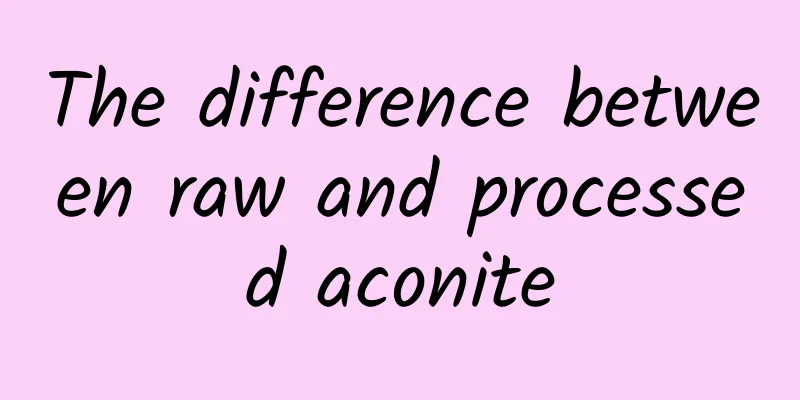What are the effects of red and white peony root

|
Some of my friends may have heard of red and white peony roots, but there are definitely not many people who really understand them. Red and white peony roots are not a single Chinese medicine but a combination of red and white peony roots. Since the medicinal effects of red and white peony roots are very obvious, it is still necessary for everyone to learn more about them. We should not only know how to use them, but also know their effects and functions. The so-called red and white peony is the collective name for the Chinese medicinal herbs red peony (known as red peony in ancient times) and white peony (known as white peony in ancient times). Red peony root has a bitter and flat smell and is non-toxic. It is mainly used to treat abdominal pain caused by evil spirits, eliminate blood stasis, break up hard masses, relieve cold and heat, fatigue due to illness, relieve pain, promote urination, and invigorate Qi. The efficacy and function of red and white peony root Peony originated from the mountains and valleys of Zhongyue. Today, it can be found everywhere in Baishan, Jiangshan, Maoshan, Huainan, Yangzhou, Jiangsu and Zhejiang, and Wusong, and many of them are planted in gardens for roasting. Red buds grow in spring and flowers bloom in March and April. They come in two colors, red and white, and have different types: dry leaves, single leaves, and leaves with small branches. The roots of single leaves are better used for medicine, because if the flowers are thin, the energy is stored in the roots. The one with red flowers is red peony root. The one with white flowers is white peony. The initial qi is Jueyin wind and wood. The second qi is Shaoyin monarch fire. Peony grows red buds in spring, and it has the wood energy of Jueyin and treats the liver. The flowers bloom between March and April, and they carry the fire energy of Shaoyin and heal the heart. The inflammation causes bitterness, which is transformed by the energy of Shaoyin Lord Fire, so its flavor is bitter and neutral. The evil of wind and wood injures the earth in the body, preventing the spleen from flowing out through the meridians, causing abdominal pain. Peony can dredge the meridians, so it can cure pain caused by evil spirits in the abdomen. The heart governs blood, and the liver stores blood. Peony has the wood energy to treat the liver, and has the fire energy to treat the heart, so it can eliminate blood stasis. If blood stasis is eliminated, the hard masses will also be broken up. If the disease is blood stasis, the body will experience chills and fever. If the disease is caused by hard accumulation, it may be a symptom or a mass. Peony can regulate the qi in the blood, so it can treat all of them. Analgesics are used to relieve abdominal pain. The liver is responsible for the release of qi, so it facilitates urination. To replenish qi means to replenish the qi in the blood. If you replenish your qi, your blood will also flow. White peony has a sour and flat smell. It has been used by scholars in the Yuan and Ming dynasties as a sour, cold and astringent product. It is often used to astringe patients with internal deficiency and diarrhea. The Ben Jing mainly treats abdominal pain caused by evil spirits, and eliminates blood stasis, cold and heat, and breaks up hard masses. It is suitable for use when the lochia has just been delivered. If the internal organs are weak and the patient has diarrhea, it is not suitable to use this medicine. White peony root and red peony root are each one of the same type. White tonifies and red purges. White astringes and red disperses. White is cold and red is warm. White enters the qi and red enters the blood. Red peony root possesses the Qi of Shaoyin and Jueyin, while white peony root possesses the Qi of Jueyin. In the above article, we introduced what red and white peony roots are. We know that red and white peony roots have good medicinal value. We can use red and white peony roots to treat a variety of diseases. The above article gives us a detailed introduction to the effects and functions of red and white peony roots. I hope it will be helpful to everyone. |
<<: Medicinal Value of White Peony Root
>>: The efficacy of Chinese herbal medicine white peony root
Recommend
What is the effect of the yellow grass?
Many people feel confused when they hear about so...
The efficacy and function of salt bran root
Salt bran root is a very common Chinese medicinal...
What is the medicinal value of licorice?
Licorice root is a plant that can be used as medi...
How many slices of American ginseng should be soaked at one time?
There are many types of ginseng, and American gin...
What made Tesla successful?
Imagine a world without lights, motors, pumps, fa...
The efficacy and function of Olea europaea
The traditional Chinese medicine Oleander is ofte...
If you have this kind of shoes at home, it is recommended to throw them away immediately! ! !
Source: Dr. Curious This article has been authori...
Side effects of magnolia flower
Magnolia flower is a kind of warm Chinese herbal ...
Handsome, cute and cool, there are many ways to keep spacecraft warm
How can spacecraft maintain stable heat preservat...
What is the medicinal property of Forsythia suspensa
Forsythia suspensa is a traditional Chinese medic...
Who is not suitable to eat Cassia seeds?
Cassia seed is a common Chinese medicine in daily...
What is the medicinal value of blue sheep?
The blue sheep is a kind of sheep between wild go...
[Creative Cultivation Program] How dirty are your mobile phone, remote control, and bed sheets? They are like a garbage dump!
Author: Shao Menglong Reviewer: Ma Zansong, Deput...
It’s no exaggeration, people can really be “angered to death”!
Review expert: Wu Xinsheng, deputy chief physicia...
The role and efficacy of wood fragrance
Medicine is very common in life. When treating di...









